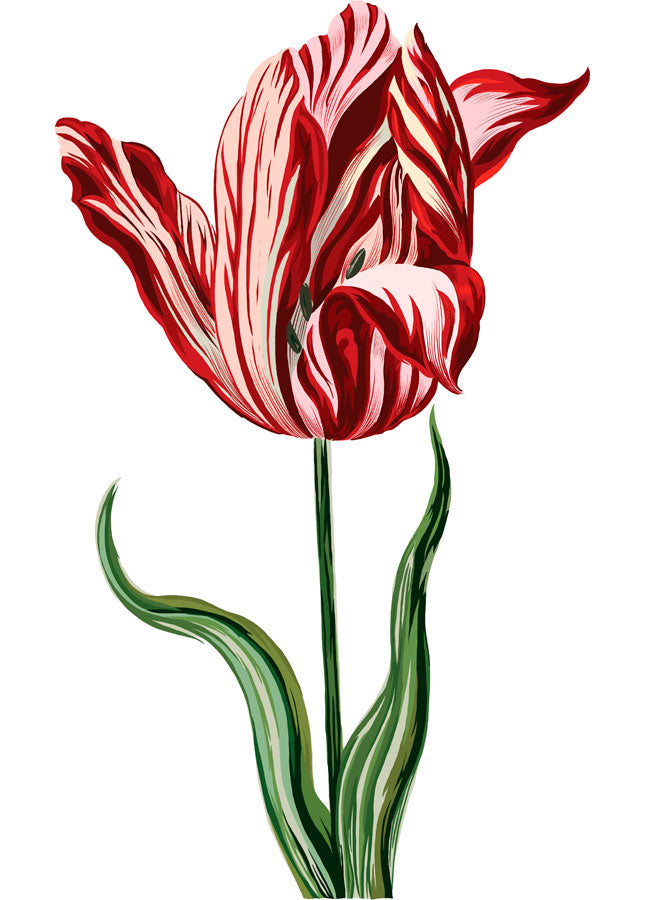The Botanical Mystery that Fueled Tulipmania
In the years leading up to Tulipmania, the Dutch became increasingly obsessed with “broken” tulips.

In the early 16th century, botany was a fledgling science. No one knew what caused the streaked and wild coloration of the most coveted tulips. One thing was certain: these flowers could commanded prices as high as the cost of a grand house on one of Amsterdam’s main canals.
Love and greed for these spectacular flowers inspired collectors and breeders to perform all kinds of experiments, hoping to uncover how produce multi-colored blooms from single colored tulips. They applied strange concoctions to planting beds or individual bulbs—pigeon dung, old plaster, manure, dishwater, even powdered paint. Tulip bulbs were exposed to the elements, planted in poor soil, soil imported from distant lands, or beds where broken flowers had bloomed before. Some bulbs were planted too deeply or in too little earth, but seemed to guarantee a break.
Rare and Valuable
Breeders came closest to success when they bound bulbs of broken and unbroken tulips together, generally to the detriment of each, but very occasionally a survivor of this process would break into the coveted flames.
Broken bulbs did produce identical plants through offsets, but the plants were often reproduced at a slower rate than single color flowers. The difficulty of propagating broken bulbs significantly increased the perceived value of the flamed beauties.
The Dutch distinguished three types of broken tulips:
- Bijbloemens: purple on white
- Roses: red to pink on white
- Bizarres: brown, purple or red on yellow
Famous cultivars of broken tulips included Viceroy, Admiraal Van Der Eijk, and the legendary Semper Augustus.
A Breakthrough
In 1928, British mycologist Dorothy Cayley discovered that an aphid-borne disease caused breaking in tulips. In the 1960s, the disease was identified as mosaic virus. The virus causes a mixture of fading and excess pigmentation on the surfaces of each petal of a tulip flower. The beautiful patterns on the inside and outside of each petal may bear little resemblance to each other.
Exact symptoms can vary slightly from tulip to tulip. Different strains of the virus can cause different symptoms, as well as other factors like the time of infection. However, once a bulb is infected, all of its offshoots will be as well. The virus also causes a gradual weakening of the bulb, reducing the number and strength of offsets. Over time, a broken tulip is more likely to die out than to multiply. This is why the old lines of broken tulips like the Semper Augustus disappeared long ago.
Once the cause of breaking was known, and the ill effects of the virus confirmed, breeders recognized that broken flowers posed a threat to the health of their tulip beds. The virus spreads easily and can threaten healthy cultivars. Commercial tulip growers began to weed out and destroy the kinds of flowers that had once been valued above all others. Today, very few breeders raise broken tulips of any kind, and planting broken tulips is illegal in the Netherlands without special provisions. A few specialty bulb collections still make them available to home gardeners, and gardeners should take precautions when planting these bulbs. However, commercial breeders have also successfully created virus-free hybrids that approximate the exhilarating beauty of broken flowers, commonly known as Rembrandt tulips.
